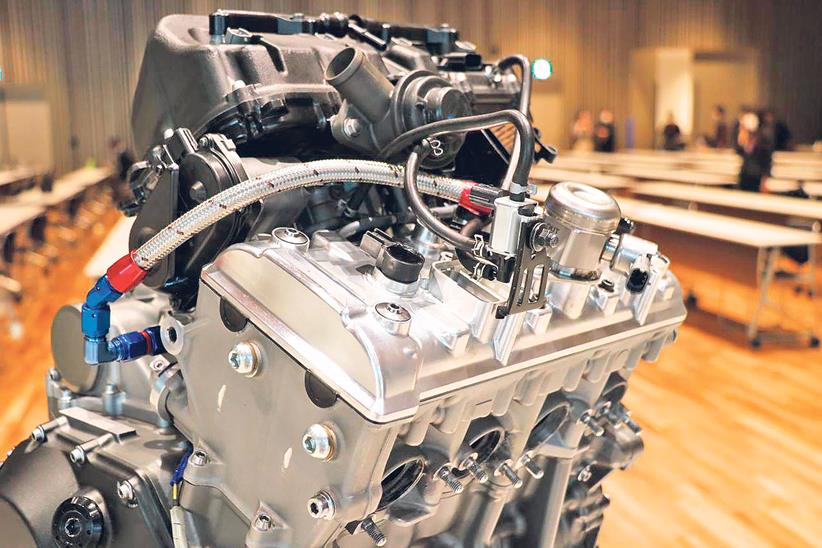Kawasaki show off next generation of electric and hybrid bikes in Japan
New images of Kawasaki’s two imminent, all-new, electric and hybrid bikes undergoing final testing suggest the firm are set to be the first of the Japanese Big Four to put next-generation EV road machines into production.
Taken in Japan, they’re the latest evidence of a rapid turnaround and escalation in ambitions which has seen Kawasaki go from saying in 2019 they had no plans for a production electric bike to recently announcing plans for over 10 battery-electric and hybrid-electric models by 2025.
Although not expected to be officially unveiled before the EICMA show in Milan in November, they follow the US-only Elektrode launched in June and fulfil a pledge made by Kawasaki CEO Hiroshi Ito late last year, stating that: “In 2022, we will show a minimum of three electric vehicles globally. That is a promise.”
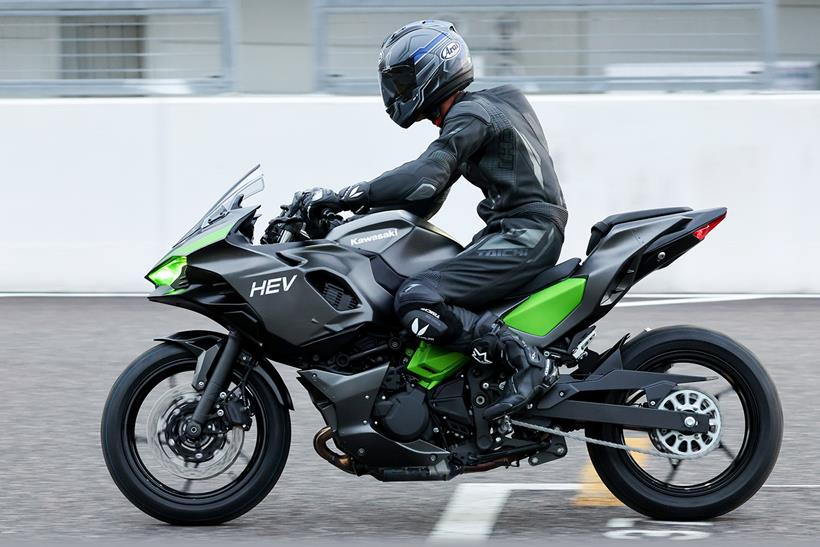
But although the Elektrode is basically a child’s battery- powered balance bike, these two new full-sized motorcycles are far more significant and clearly virtually production-ready.
The first, a fully-electric roadster, looks set to be the first all-electric road motorcycle from one of the Japanese Big Four manufacturers.
The second, a faired sportster, is even more revolutionary in being the world’s first hybrid motorcycle, combining electric and conventional petrol motors.
The roadster, labelled EV (for Electric Vehicle), is clearly a lightweight, probably 125cc-equivalent naked with styling derived from Kawasaki’s own petrol-driven, single cylinder, learner-legal, A1 class Z125.
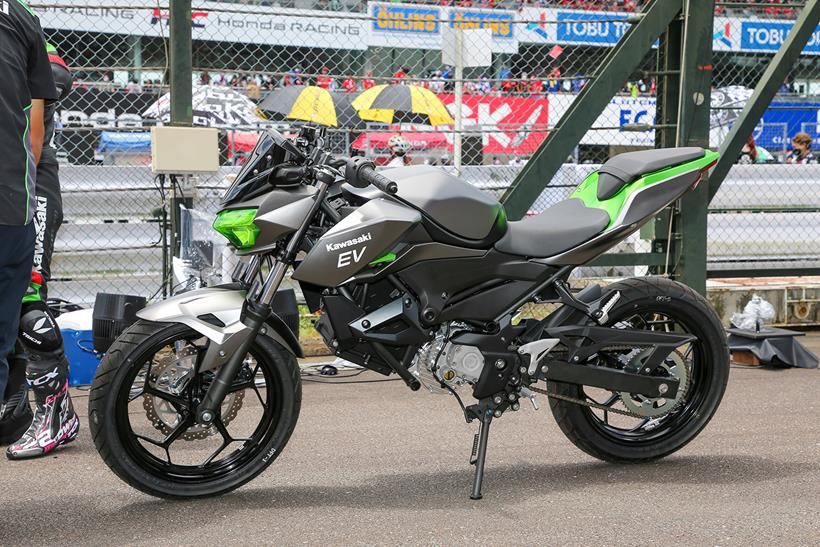
From the pictures it clearly has a conventional tubular steel chassis, telescopic forks, monoshock rear and, interestingly, chain rather than belt drive. As expected there’s no gear lever although a selection of different performance modes are likely to be available at the push of a button.
But the second, faired sportster, labelled ‘HEV’ in the pictures (Hybrid Electric Vehicle) is arguably even more significant.
MCN understands it’s based on the parallel twin engine from either the Ninja 250 or recently-revived Ninja 400 but also equipped with a large electric motor mounted above the gearbox and connected to the transmission via a clutch.
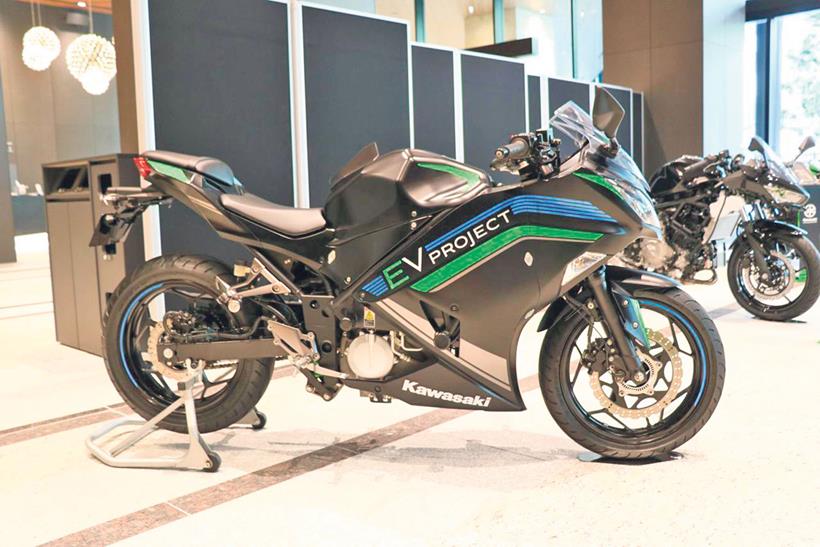
This electric motor can then either provide direct drive or act as a generator to recharge the battery when the bike is operating under petrol drive as per a hybrid car.
The pictures confirm this by showing two exhaust header pipes exiting the front of the engine while the fairing is similar to that of the Ninja 400 but broader and with significantly more cooling inlets. It also has more expansive side panels but otherwise appears to have similar proportions.
No model names have yet been announced but Kawasaki have used the code names ‘NX011AP’ and ‘NR011AP’ in American filings and have trademarked the titles Ninja E2 and Ninja E2-R.
Kawasaki hybrid revealed: Petrol-electric bike shown as firm reveal eco plans
First published on October 13, 2021 by Ben Purvis
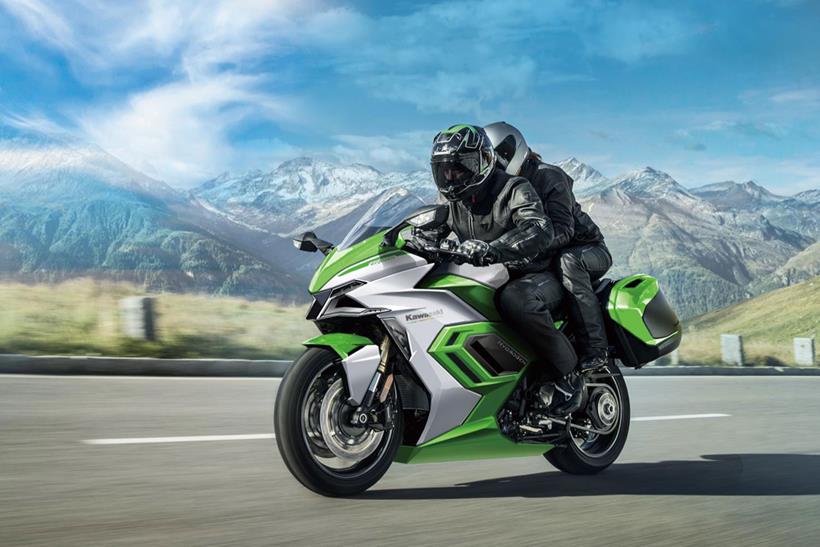
Kawasaki have announced plans for a future range of hybrid and battery-powered bikes with a timescale that will see the first examples hitting showrooms in the very near future.
In doing so, the company took the wraps off the hybrid prototype that they have been dropping hints about for the last year or so, giving a clue as to how the technology will be applied to evolutions of existing petrol-powered machines.
Related articles from MCN
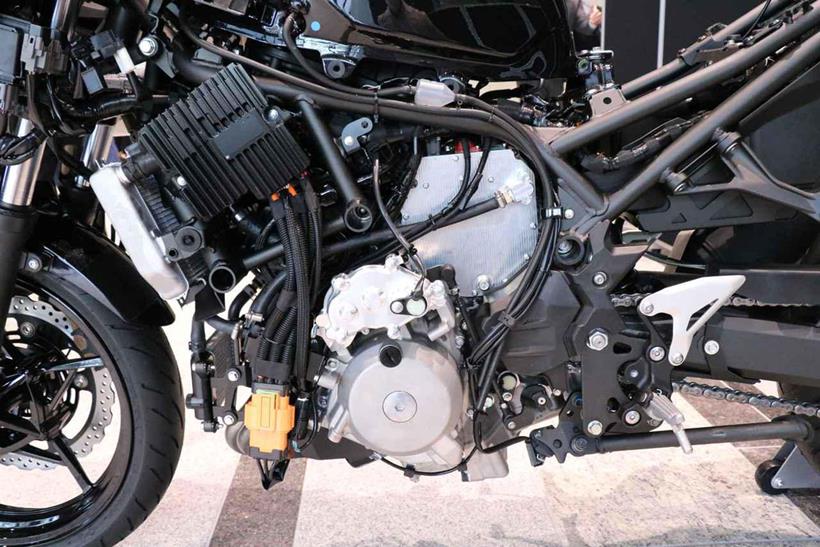
Bosses announced that by 2035 every major model they sell in developed markets will be either fully electric or a hybrid.
In the shorter term, the company vowed to have more than 10 battery-electric and hybrid-electric motorcycle models in showrooms by 2025, little more than three years from now. That’s a notable turnaround from a couple of years ago, when, on showing an electric prototype, Kawasaki said there was no plan for a production bike.
Kawasaki say that come 2025 they will be launching an average of 16 new models a year (including the battery-electric and hybrids), and by then the firm will have launched 15 new off-road models, including some electric and/or hybrid machines.
Kawasaki also revealed that they’re developing hydrogen fuel technology for internal combustion engines – showing a version of the H2’s supercharged four-cylinder fitted with direct fuel injection, which is a steppingstone towards a hydrogen fuelled version.

Burning hydrogen instead of petrol means the exhaust would simply be water vapour, while retaining the performance and visceral appeal of an internal combustion engine.
The hybrid technology is what separates Kawasaki from their rivals at the moment. Although hybrid bikes have been made before, including Honda’s PCX Hybrid scooter and a handful of Piaggios, Kawasaki’s dedication to the idea is a step ahead.
Although Kawasaki haven’t officially revealed any details of the hybrid prototype, it appears to use the parallel twin engine from either the Ninja 250 or Ninja 400 (they’re visually identical, but the prototype has the slightly longer exhaust end can of the Ninja 400).
A large electric motor is fitted above the gearbox, connected to the transmission via a clutch. It can either provide drive or act as a generator to recharge the battery.

Speaking of the battery, that’s a 48V unit mounted under the seat. Its quite small, as the intention isn’t to allow a long electric-only range, but enough to allow the bike to run in pure electric mode at city speeds for short commutes or to boost the petrol engine’s performance when more power is needed out of town.
Kawasaki have also added a semi-automatic, pushbutton-operated transmission to the bike – probably to help smooth the transition between battery power, petrol power and combined hybrid power.
Unusually, the firm’s all-electric prototype, first seen in 2019 but shown again alongside the new hybrid, has a manually operated gearshift, even though most electrics are single speed.
Kawasaki hybrid technology explored:
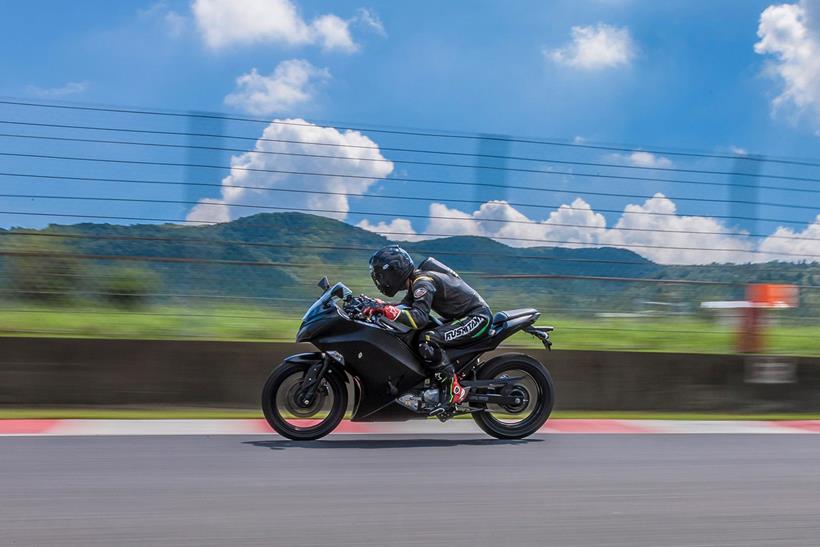
- Battery box The 48V main battery is in a large box under the rider’s seat, while there’s also a small 12V battery to operate the petrol engine’s electronics.
- Parallel lines The parallel twin engine hybrid Kawasaki prototype uses an existing twin, either from the Ninja 250 or Ninja 400, good for either 36hp (250) or 45hp (400).
- Keeping cool The electric motor sits above the transmission. It’s water-cooled, with a small additional radiator below the bike’s main rad.
- Clean running in town The hybrids include pure petrol drive (allowing regeneration of electric power). The pure-electric mode could be automatically invoked using geolocation in cities to meet zero-emissions zones.
- Shifting made easy There’s no clutch or shift lever, but left-hand push-button controls to change ratio. An actuator on the left of the engine controls the gear shifter.
Better together: Kawasaki working on hybrid bikes and AI assistants
First published on 26 November 2020 by Jordan Gibbons
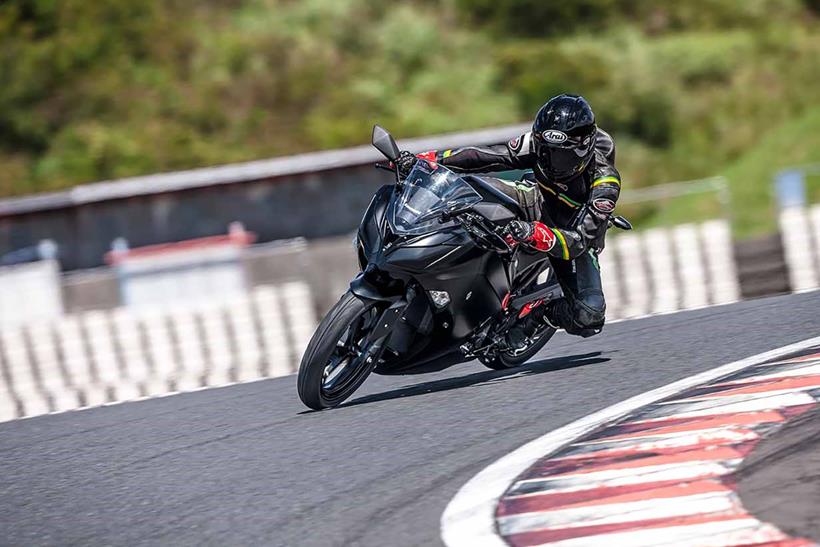
Kawasaki are exploring hybrid technology and motorcycles with artificial intelligence as they consider the future of motorcycling.
Related articles from MCN
- Electric motorbikes coming soon
- Best electric motorbikes available right now
- Latest on the petrol and diesel ban for UK
Following on from their unveiling of an electric prototype at Eicma 2019, Kawasaki say they are now exploring the “possibilities of hybrid technology” with a bike that combines a small “clean running” petrol powered engine with an electric motor and battery power.
“Addressing the contemporary issues of overall electric vehicle range and the trend for many cities across the world to declare zero emission credentials, the new hybrid two-wheeler is still at an early stage but illustrates well the diversity of Kawasaki research into emerging vehicle systems,” says Masanori Inoue, General Manager of Marketing and Sales at Kawasaki.
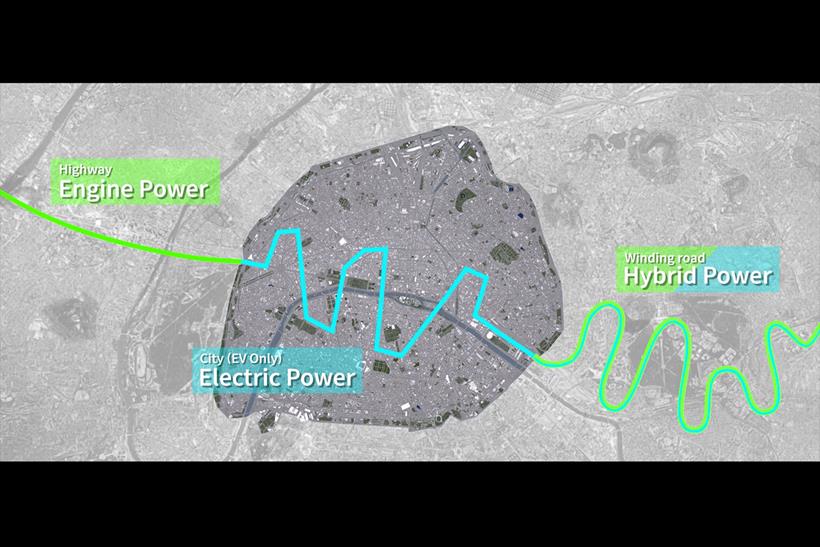
Although details are scarce on the exact nature of the machine Kawasaki are working on, they say its ability to switch from petrol to electric seamlessly would be good for “short to middle distance commuters”. To demonstrate this, Kawasaki have released a video that shows the bike running on a dyno, switching from electric to petrol power and a combination of both.
The idea is that riders could ride to the outskirts of a city under petrol power, then continue into the centre on electric power only. Other manufacturers have dabbled with this already – Honda already have a hybrid scooter on sale, albeit not in the UK – whereas others such as BMW have dismissed hybrid bikes due to issues with size and weight.
However Kawasaki say the key to unlocking the technology has come from an unlikely place: trams. Kawasaki Heavy Industries manufacture all sorts of large scale equipment, including scalable nickel-metal hydride (NiMH) batteries they call Gigacells.
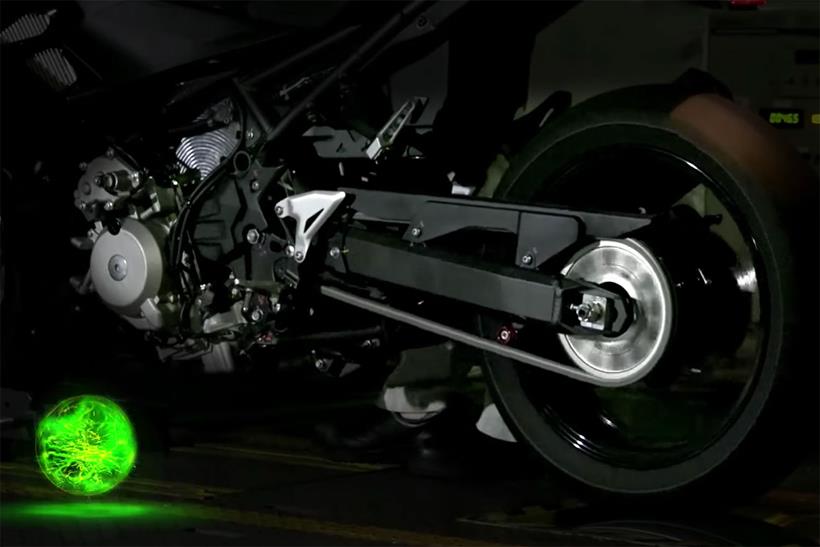
These Gigacells are already in use on electric trams in Sapporo, with more research on going. Kawasaki aren’t yet sure if NiMH batteries will be the final power supply for a hybrid bike but they’re confident with their experience they can find a solution.
In another slightly Tomorrow’s World experience, Kawasaki have also been experimenting with motorcycle AI. Currently being trialled with a group of riders in Japan, the AI concept uses an in-helmet voice interface that allows riders to ask the bike questions.
It can be simple stuff such as ‘how much fuel range do I have?’ to more complex questions like ‘what’s the weather at my destination?’ or ‘how’s the traffic on route?’. Perhaps we should ask it, ‘whatever next?’…





